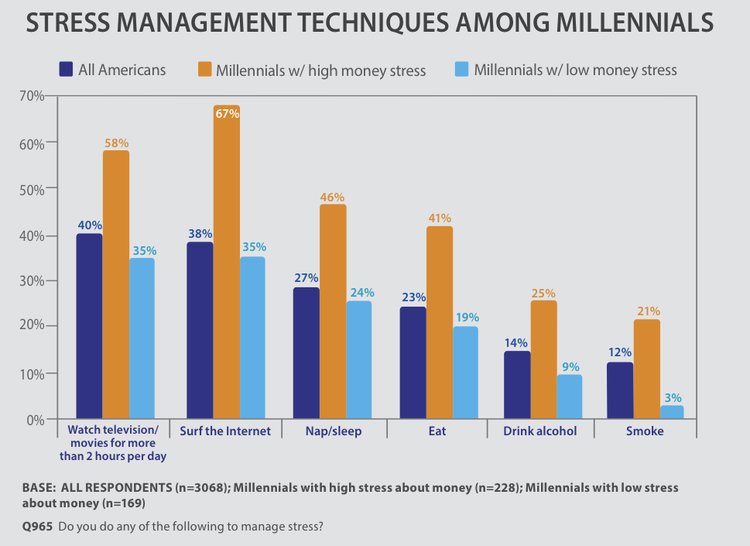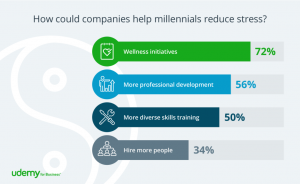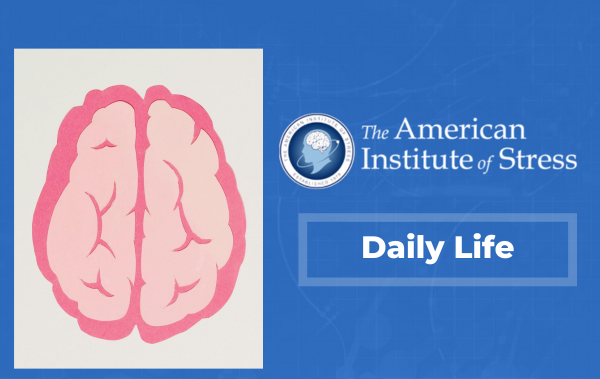
Negative stress affects all our lives almost daily. It has become so prevalent, that we tend just to accept it as a normal thing. While there are different stressors and levels at different times in our life, we still can’t get away from it completely.
We also have found that no matter what age you are, you still experience stress, but some groups seem to have higher levels.
Which brings us to the question, which age group experiences the most stress. First, I should say that everyone is different and just because you are in an age group, you may manage your stress in a completely different way than your peers.

The four generations are defined as the following: Millennials (18- to 33-year-olds), Gen Xers (34- to 47-year-olds), Boomers (48- to 66-year-olds) and Matures (67 years and older).
According to the American Psychological Association (APA), those people aged 18-33 years old suffer the highest levels of stress in the nation, In an assessment measuring stress, the millennial generation scored a 5.4 (on a scale of 1 to 10), compared to the national average of 4.9. The APA considers that a significant statistical difference. The main worry bugging young Americans is a concern for jobs and money.
Thirty-nine percent of Millennials say their stress has increased in the last year, compared to 36 percent of Gen Xers, 33 percent of Boomers and 29 percent of Matures. More than 52 percent of Millennials report having stayed awake at night in the past month due to stress, compared that to 48 percent of Gen Xers, 37 percent of Boomers and 25 percent of Matures. The biggest cause of stress in Millennials is by far work-related almost 76 % reported work as a significant stressor.
Additionally, 44 percent of both Millennials and Gen Xers report experiencing irritability or anger due to stress, compared to 36 percent of Boomers and 15 percent of Matures. Because of this increase, there are now many programs and seminars focused on managing stress. These seminars help people manage their stress at home and at work. According to the American Institute of Stress data, workplace stress has become an epidemic with Americans working longer and harder than before. Also, according to the Center for Disease Control and Prevention, these are the early warning signs of job stress:
Cardiovascular Disease
Many studies suggest that psychologically demanding jobs that allow employees little control over the work process increase the risk of cardiovascular disease.
Musculoskeletal Disorders
Based on research by NIOSH and many other organizations, it is widely believed that job stress increases the risk for development of back and upper- extremity musculoskeletal disorders.
Psychological Disorders
Several studies suggest that differences in rates of mental health problems (such as depression and burnout) for various occupations are due partly to differences in job stress levels. Economic and lifestyle differences between occupations may also contribute to some of these problems.
Workplace Injury
Although more study is needed, there is a growing concern that stressful working conditions interfere with safe work practices and set the stage for injuries at work.
Suicide, Cancer, Ulcers, and Impaired Immune Function
Research also suggests a relationship between stressful working conditions and these and many other health problems.

Preventing or managing stress at work must take a comprehensive approach. While there is no universal prescription to manage stress, there are many stress management programs that employer and employees can benefit from. The American Institute of Stress is pleased to announce its new online course called Transforming Stress to Joy taught by a renowned psychiatrist and stress specialist. In just 20 minutes a day for three weeks, you can learn to reframe your thought patterns to not only manage stress, but to become truly happy too. For a limited time, the course will include a basic one-year membership to The American Institute of Stress where you can learn much more about stress and how to harness it for positive energy. Sign up now at https://www.stress.org/transforming-stress-to-joy. It seems Millennials are working longer hours. They also don’t disconnect from their job. Because of technology, they stay in constant touch with bosses and co-workers. In the 2017 APA report on stress in the United States, a large emphasis was placed on the interactions between stress and technology, particularly among millennials. Technology has a negative impact on the physical and mental health of its users, even more so among a group they named “constant checkers.”
We all experience stress. Whether you are a Millennial, or any other age group. It’s how we manage that stress that is most important. So, if you are finding that stress is having a very big negative impact on your life, change it. Either change the way you are looking at it to become more resilient, or separate yourself from that person, place or thing that gives you the most stress. Of course, exercise, good sleep, and a balanced diet impact are a great place to start for any age group. The American Institute of Stress exists to help you manage your life for the better. Millennial’s, like all of us, need to find a good balance in our lives.
by William C. Heckman, MS, DAIS
Executive Director
The American Institute of Stress





